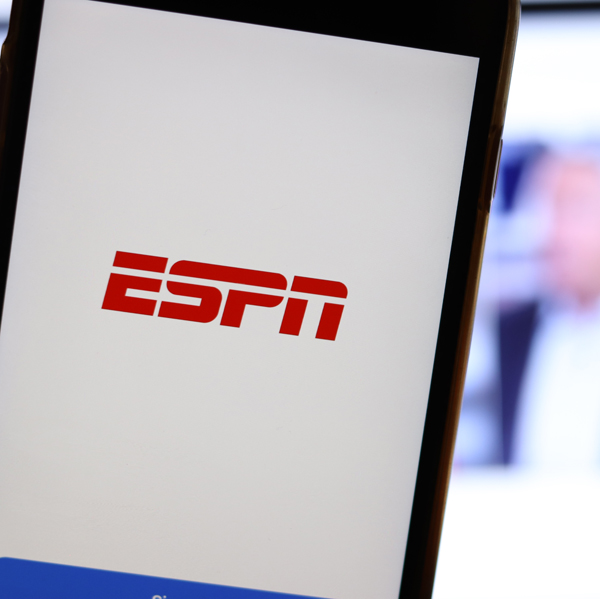Disney is starting off the year with subscriber losses. But the Mouse House says it’s all part of the plan.
Disney+ lost 1.3 million subscribers in Q1, which execs chalked up to subscriber churn following the recent price hikes for its ad-free streaming tier. But thanks to those price increases, average revenue per user (for the US and Canada) is up 9% since the previous quarter, and Disney’s operational losses are narrowing.
“We remain poised to reach profitability in our combined streaming business by the end of fiscal [year] 2024,” CEO Bob Iger told investors during Disney’s earnings call on Wednesday.
And a core element of the growth plan is … sports.
On Tuesday, Disney announced plans to form a new sports streaming TV service in the fall as part of a joint venture with Fox and Warner Bros. Discovery.
Then, on Wednesday, Disney shared details about the standalone ESPN+ app, which has been in consideration for months.
The ESPN+ app is set to launch in August 2025 and will be available to Disney bundle subscribers.
Sporting subscribers
Sports aren’t going away as viewers (and advertisers) switch to streaming channels. But cord-cutters are only getting choosier about which streaming services they pay for. And popular live sports aren’t cheap (to put it mildly).
Disney plans to pitch prospective subscribers on ESPN+ by promising the full slate of ESPN channels. (Currently, the Disney bundle doesn’t include the ESPN flagship channel.)
The company also hopes to attract younger users to the new ESPN+ app with ecommerce offerings, sports betting and “robust personalization features,” Iger said, although he didn’t elaborate.
Disney expects ESPN+ subscriber growth to be a natural next step for Disney’s streaming services bundles. For instance, Hulu content is now part of the Disney+ app via a beta test among bundled subscribers, with general availability coming in March.
Compared to standalone streaming apps, centralized content across several services “raises engagement and reduces churn,” Iger said. For that reason, Disney expects bundled subscribers to pay the add-on for the new ESPN+ app once it’s available.
Calling all advertisers
Content consolidation and, therefore, subscriber growth also means “higher advertising potential” for Disney, Iger said. That potential would explain why Disney introduced combined Disney+ and Hulu ad campaigns for brands in the US last month.
Disney+ currently has more than 1,000 global advertisers, up from 100 when Disney+ went AVOD in December 2022. And the number of advertisers buying Disney+ supply should continue to rise as Disney continues to grow its ad distribution (i.e., people sign up for ad-supported streaming services).
Now that Disney+ with ads is part of Charter’s most popular Spectrum cable bundle, Disney expects to add several million subscribers to its ad-supported offering this quarter, according to Hugh Johnston, Disney’s new CFO as of December.
Streaming accounts with ads have higher ARPU than ad-free accounts, which is why Disney – and other streaming players – have made it a priority to grow advertising viewers, even at the expense of total viewers.
Moochers and copycats
Aside from content bundling and distribution, Disney is experimenting with another common move from the ad-supported playbook: anti-account sharing.
Starting this summer, “Disney+ accounts suspected of improper sharing will be presented with [options for] borrowers to start their own subscriptions,” Johnston said. Later this year, account holders will have the option of adding users outside of their household to their account for an additional fee.
It’s an idea unabashedly taken from Netflix. “Our competitor has taken advantage of this,” Johnston said, referring to how Netflix grew its ad-supported base by banning password sharing.
When it comes to paid sharing, “we don’t expect notable benefits from these initiatives until the [latter] half of 2024,” he said.
Until then, Disney is getting its head in the sports game.














